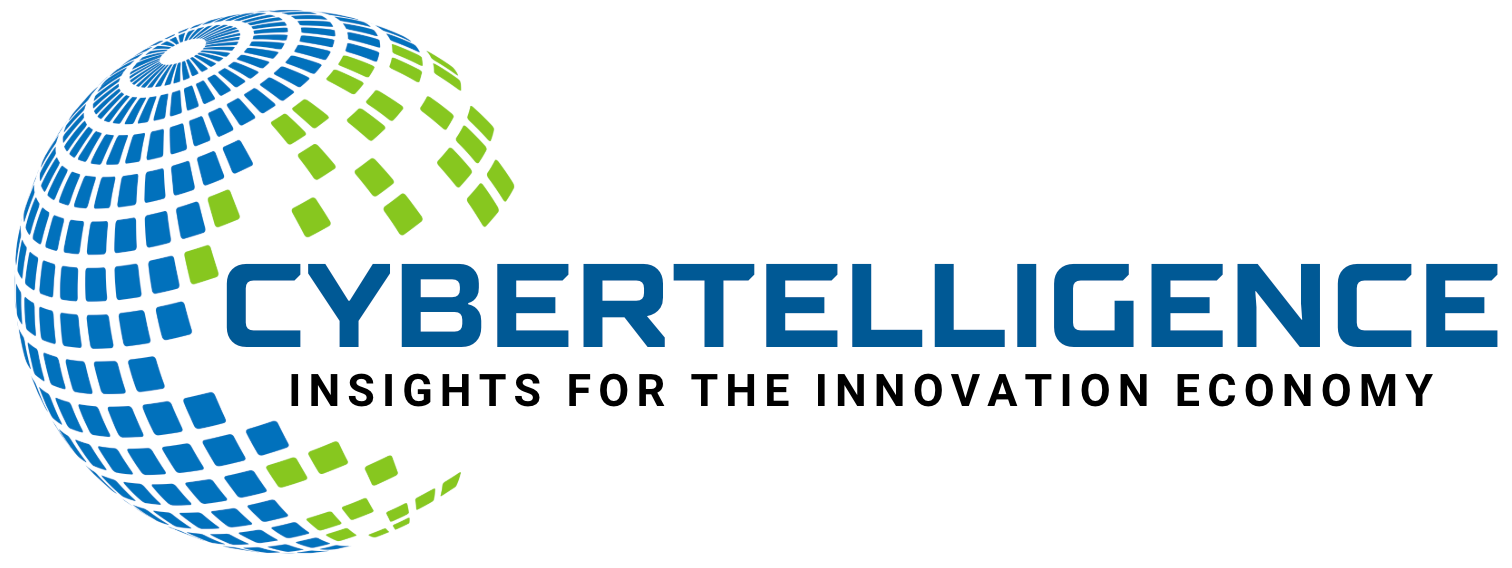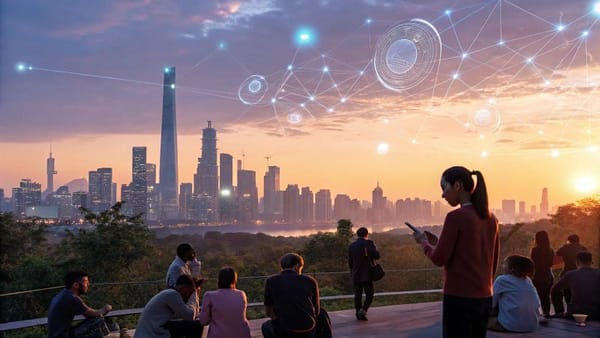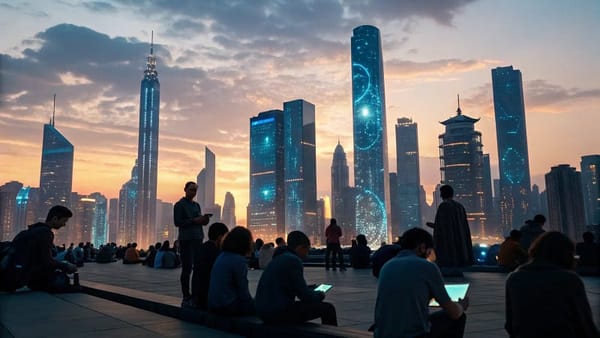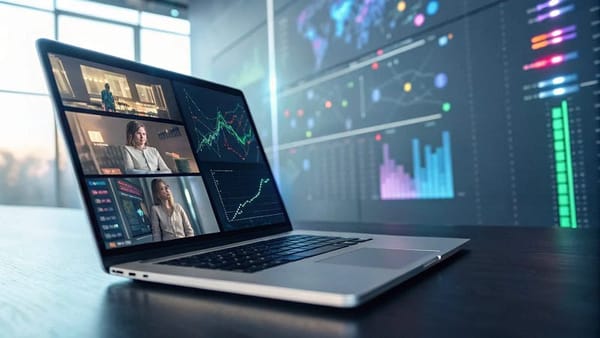Inside Jensen Huang’s Crystal Ball: Unfiltered Insights on AI’s Wild Decade Ahead
One CEO’s bold forecasts on AI have sparked serious discussions in executive boardrooms and inspired serious talks within the White House…
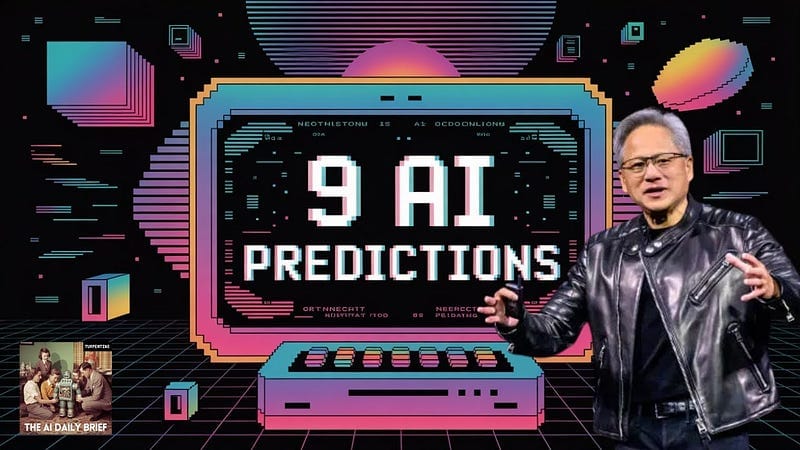
One CEO’s bold forecasts on AI have sparked serious discussions in executive boardrooms and inspired serious talks within the White House. Why should this matter to you? Whether you manage a startup, invest in stocks, or simply use a smartphone, these transformations are approaching quickly — and surprisingly, even those responsible for crafting them don’t have all the answers. Here’s what to expect in the forthcoming AI-driven decade, directly from the front lines of this evolving landscape, including the latest trends in AI infrastructure investment.
1. Millionaires, Billionaires, and the Surprising Math of AI Wealth Creation
When it comes to wealth creation through AI advancements, few voices carry as much weight as NVIDIA CEO Jensen Huang. At a recent roundtable with the All In podcast, Huang didn’t just talk about the next few years — he zoomed out, offering a sweeping vision of the decade ahead. His prediction? AI will create more millionaires in five years than the Internet did in twenty. It’s a bold claim, but one that’s quickly gaining traction as the numbers — and the headlines — pile up.
The conversation, which also featured AMD’s Lisa Su and other industry leaders, quickly shifted from policy to people. While most were focused on how the U.S. could cement its leadership in AI, Huang was already looking at the long-term impact of high-value creators in the AI industry. He pointed to a new kind of gold rush, one where the most valuable resource isn’t hardware, but human capital.
The Real IP: Minds, Not Machines
One of the most striking trends in AI right now is the fierce competition for top researchers. As co-host Chamath Palihapitiya observed, the biggest contracts are happening at the model research layer — not in hardware. Mark Zuckerberg’s recent hiring spree at Meta is a case in point. The company is reportedly willing to pay billions for a handful of elite AI minds, with the logic being simple: these researchers carry the intellectual property (IP) in their heads. When you consider that OpenAI’s valuation is north of $300 billion, paying $3 billion for access to that kind of brainpower suddenly seems like a bargain.
Huang, never one to shy away from a bold statement, put it bluntly:
I’ve created more billionaires on my management team than any CEO in the world. — Jensen Huang
It’s a brash claim, but it underscores the seismic shift underway. In this new era, elite AI researchers are redefining ‘human capital’ — their productivity and compensation are skyrocketing, and their impact is felt across trillion-dollar industries.
The 150-Person Rule: Lean Teams, Massive Impact
Perhaps the most surprising math in this story is just how few people it takes to drive these outcomes. Huang highlighted that teams like DeepSeek and Moonshot’s Kimmy operate with around 150 researchers each. That’s shockingly lean for groups building the next generation of AI models — models that could underpin entire industries. As Huang put it, “the impact of a hundred and fifty or so AI researchers can probably create, with enough funding behind them, an OpenAI.”
This isn’t just theory. It’s happening now. The AI-driven labor market is tilted toward demand, not supply. There are more jobs than people to fill them, at least for now. According to Huang, “100% of NVIDIA staff now use AI daily,” and the company is busier than ever, with no layoffs in sight. The implication is clear: AI isn’t just creating new roles, it’s transforming existing ones and accelerating the pace of opportunity.
Buying Minds, Not Companies
The current “arms race” for AI talent is upending the normal rules of tech recruitment. Instead of acquiring startups for their products or patents, giants like Meta are “buying minds.” The rationale is straightforward: if a startup with 150 researchers can command a $20 or $30 billion price tag, why not invest directly in the people who hold the keys to the next breakthrough?
Research shows that this shift is already reshaping the landscape. Funding is flowing fast, and the competition for high-value creators in the AI industry is fierce. The result? A wave of wealth creation through AI advancements that’s moving faster than anyone expected. As Huang’s predictions echo across Silicon Valley, one thing is certain: the math of AI wealth creation is only just beginning to rewrite the rules.
2. Everyone’s a Programmer, Artist, and Author — Or Are They? The Wild Upside of AI Skill Democratization
Jensen Huang, CEO of NVIDIA, is not mincing words about the future of work. In his latest predictions, he calls artificial intelligence the “greatest technology equalizer of all time.” If the Internet flattened the world’s geography, AI is flattening the world’s skill barriers. The implications for the AI democratization of skills are profound and, for many, unsettling.
“Everybody’s a programmer now. You used to have to know C, then C++, and then Python. Even if you don’t know how to program an AI, just go up to the AI and ask how do I program an AI,” Huang said. The statement is bold, but the evidence is mounting. Take the example of Norway’s Sovereign Wealth Fund: half of its team now codes, thanks to AI tools. These aren’t lifelong developers — they’re professionals who, until recently, might never have written a line of code. Now, with AI’s help, they’re automating tasks, building tools, and solving problems that once required years of technical training.
This shift isn’t limited to programming. Huang argues that “everybody’s an artist now. Everybody’s an author now.” AI image generators and large language models are making it possible for anyone to create digital art, write stories, or compose music. The Future of AI programming skills isn’t about memorizing syntax or mastering brush techniques — it’s about learning how to collaborate with AI, prompt it effectively, and curate its output.
But there’s a catch. As AI raises everyone’s productive capacity, the definition of “high skill” is being rewritten. Tasks that once set experts apart — writing code, designing graphics, drafting reports — are now accessible to the masses. As output becomes more uniform and the playing field levels, the bar for what counts as exceptional rises. In effect, today’s advanced skills become tomorrow’s baseline requirements.
- AI democratization of skills is lowering barriers to entry in programming, art, and writing.
- Companies like Norway’s Sovereign Wealth Fund are seeing a tipping point, with non-technical staff becoming coders.
- AI is not just automating repetitive work; it’s creating a “team of agents” that can tackle complex, creative tasks.
- The benchmarks for “high skill” are shifting — what was once advanced is now expected.
Research shows that this reset of skill hierarchies is already impacting the labor market. Some jobs are being automated out of existence, while new roles — AI prompt engineers, digital curators, creative directors for AI-generated content — are emerging. The impact of AI on job creation is fast and uneven, with both creative expansion and creative destruction happening in tandem.
For many, the promise of AI is a productivity power-up. Tasks that once took hours can be completed in minutes. Need to build a website? AI can scaffold the code. Want to illustrate a children’s book? AI can generate images in seconds. But with this newfound power comes a subtle twist: as more people gain access to these tools, the competition intensifies. The playing field levels, but then the bar moves higher.
Huang’s vision is both exhilarating and daunting. On one hand, AI gives everyone the chance to be more productive, creative, and technically capable than ever before. On the other, it forces a relentless cycle of upskilling. As AI normalizes and equalizes outputs, the gradients of skill shift upward. The labor market is in flux, with roles disappearing and new ones emerging at a dizzying pace.
Everybody’s a programmer now. You used to have to know C, then C++, and then Python. Even if you don’t know how to program an AI, just go up to the AI and ask how do I program an AI. — Jensen Huang
In practice, AI isn’t just a shortcut; it’s a fundamental change in how work gets done. The future of AI programming skills will be defined not by who can write the most elegant code, but by who can harness AI’s power most effectively. The wild upside? A new era of creativity and productivity — tempered by the reality that the definition of “skilled” is always on the move.
3. Twin Factories Everywhere: How the ‘AI Factories Concept’ is Changing Industry DNA
Imagine a world where every product, from sneakers to self-driving cars, is the output of not one but two factories: one with assembly lines, the other humming with code. The only thing more science fiction than that? It’s already happening. The AI factories concept — once a niche idea — has quickly become a central pillar in the future of manufacturing and beyond.
Jensen Huang, CEO of NVIDIA, first unveiled the twin factories concept in AI at the company’s GTC event in March. The idea was simple, but radical: every manufacturer would soon need two factories. One would handle the physical production — the nuts, bolts, and conveyor belts. The other would be a digital twin, a software-driven environment where AI simulations could prototype, test, and troubleshoot every process before a single real-world part was touched.
Huang’s vision has since expanded. It’s no longer just about manufacturing. “Everything that moves will be autonomous. Every company in the future will have two factories,” he declared. That means logistics, aviation, even traffic control — fields once seen as immune to digital disruption — are now in the crosshairs of AI twin factories.
In the future, every industrial company is going to be an AI company, or you’re not going to be an industrial company. — Jensen Huang
This shift is more than a clever metaphor. Research shows that AI factories production is already transforming how businesses operate. Digital twins, powered by advanced AI, can simulate entire production lines, train robots, and identify bottlenecks before they become costly shutdowns. The result? Reduced downtime, lower costs, and a new era of simulation-based optimization. In short, the AI factory is not an add-on — it’s a parallel core business process, as vital as the machines that produce cars or consumer goods.
Industry insiders point to a fundamental transformation underway. The twin factories concept in AI is blending physical production with digital optimization, rewriting the DNA of entire sectors. AI simulation, once reserved for high-stakes aerospace or Formula 1 teams, is now moving into every field that “moves” — from global shipping to food processing. And it’s not just about goods. Software “factories” dedicated to AI model creation are rapidly becoming as important as the physical plants themselves.
Consider the implications for the labor market. As AI factories become standard, new high-value roles are emerging — AI programmers, simulation engineers, and digital twin operators. At the same time, the process of creative destruction is in full swing. While the future promises greater capability and new jobs, the transition period will bring upheaval and uncertainty for many workers. It’s a reality that industry leaders and policymakers cannot afford to ignore.
Meanwhile, the scale of investment is staggering. Huang predicts that AI spending will soar by over 300% in the next three years, with data center expenditures potentially reaching $1 trillion by 2028. NVIDIA’s own platforms, like Rubin Ultra, are set to deliver up to 15 exaFLOPs of FP4 inference performance — a 14x leap over previous generations by 2027. These advances aren’t just about raw power; they’re about making AI infrastructure as central to industry as electricity or the internet.
Even sectors like air traffic control are being reimagined. Huang suggests that, in the near future, human workforces may oversee vast AI systems managing everything from flight paths to logistics chains. The AI factory, in this context, becomes the invisible engine driving efficiency, safety, and innovation across the board.
In summary, the AI factories concept is no longer a futuristic vision. It’s a present-day reality that’s reshaping how companies design, build, and deliver everything. As the line between physical and digital blurs, the question is no longer if, but how quickly, every industrial company will become an AI company — or risk fading into irrelevance.
4. The Multitrillion-Dollar AI Infrastructure Stampede (and Why Wall Street Still Doesn’t Get It)
Wall Street analysts have spent months debating whether the current surge in AI infrastructure investment is a bubble or the start of a new era. According to NVIDIA CEO Jensen Huang, the answer is clear: we’re not even close to the peak. In fact, he argues, the world is only a few hundred billion dollars into what will become a multitrillion-dollar buildout of AI data centers and AI supercomputers in the U.S. over the next several years.
Huang’s perspective is rooted in a simple but radical idea: AI is not just another software upgrade or a new application layer. Instead, it’s a fundamental reinvention of computing itself. “
We are reinventing computing for the first time in sixty years. This is a very big deal - Huang declared, underscoring the scale of the transformation underway.
AI Spending Increase: The Numbers Are Staggering
Research shows that AI spending will increase by over 300% in just three years, with data center expenditures potentially hitting $1 trillion by 2028. This isn’t just about more servers or faster chips. It’s about a new kind of infrastructure — one that will underpin everything from healthcare to manufacturing, finance to logistics. Huang points to Arizona and Texas as early examples: “We’re probably going to produce half a trillion dollars’ worth of AI supercomputers,” he said, “and that’s probably going to drive a few trillion dollars’ worth of AI industry.”
The AI infrastructure industry is evolving at breakneck speed. In these states, construction crews are racing to build massive AI data centers — what Huang calls “AI factories.” These aren’t just warehouses for data; they’re the engines of a new digital economy, producing tokens and insights as outputs, and fundamentally shifting how value is created.
Wall Street’s CapEx Worries: Missing the Bigger Picture
Despite the eye-popping numbers, many on Wall Street remain skeptical. Concerns about overspending on capital expenditures (CapEx) dominate the conversation. But as Huang sees it, these worries miss the bigger picture. The real risk isn’t overspending — it’s undershooting the scale of demand. “The demand for AI is orders of magnitude larger than most people assume,” he argues. The initial supply of AI supercomputers U.S. and AI data centers transformation will barely scratch the surface of what’s needed.
This disconnect is about more than just numbers. It’s about a fundamental misunderstanding of what’s happening. Many investors still see AI as an add-on, something that fits neatly into the existing tech ecosystem. Huang disagrees. For him, this is the biggest tech shift in decades — a revolution that will reshape the entire foundation of the U.S. economy and redefine global competition.
AI Factories and the New Economic Playbook
The rise of AI data centers is already altering economic strategies. As the U.S. and China compete for AI dominance, debates around protectionism and tech sovereignty are intensifying. Yet Huang suggests the real path forward is outcompeting, not walling off. “People always degrade down to tennis shoes. We don’t have to go there. We’ll just manufacture chips and supercomputers,” he quipped, hinting at a future where digital infrastructure, not traditional manufacturing, drives national power.
Studies indicate that this AI infrastructure investment is not just about technology — it’s about wealth creation, job transformation, and the emergence of entirely new industries. The AI infrastructure industry is poised to become the backbone of the next American century, with the number of zeros in the investment column only going up from here.
When Wall Street asks if we’re in a bubble, Huang isn’t sweating it. From his vantage point, we’re barely out of the starting blocks. The AI data centers transformation is just beginning, and the stampede is only getting louder.
5. Whose Tech Stack Wins? The New Arms Race for Global AI Dominance
As the global AI competition between the U.S. and China heats up, the battleground is shifting away from tariffs and trade restrictions. According to NVIDIA CEO Jensen Huang, the true contest is now over the tech stack — the combination of hardware, platforms, and, perhaps most crucially, the developer community that builds on top of them. In this new arms race, the victor will not be decided by who has the fastest chip, but by who owns the ecosystem that developers trust and rely on.
Huang’s perspective is clear: “Any computing platform wins because of developers.” This isn’t just a slogan — it’s a strategic reality. The American tech stack, anchored by platforms like the NVIDIA CUDA-X platform, has become the backbone for much of the world’s AI innovation. Research shows that developer ecosystems and platform compatibility are now the ‘ground zero’ for future AI global competition. The top three open AI models — DeepSeek, Kwen, and Kimmy — are downloaded hundreds of millions of times, and all run best on U.S.-based, NVIDIA-powered infrastructure. This dominance is not accidental. It’s the result of years of investment in both hardware and the software tools that make it easy for developers to build, deploy, and scale AI solutions.
But the story doesn’t end with technical superiority. The real moat, as Huang sees it, is developer lock-in. CUDA programming has given NVIDIA chips an enduring appeal. Once a model is built on the CUDA-X platform, porting it to a rival system is no simple task. Compatibility issues abound, and while workarounds exist, the friction is enough to keep most developers loyal. This isn’t just about convenience — it’s about momentum. When developers are invested in a platform, they create a virtuous cycle of innovation, tools, and community support that’s hard for competitors to disrupt.
Yet, the landscape is far from simple. Half of the world’s AI developers are now located in China, making the race for platform and ecosystem dominance doubly complex. Huang’s approach is not to throw up walls or close off technology borders. Instead, he argues for outcompeting China by keeping the American tech stack at the center of global AI development. The goal is to ensure that the world’s best models and most ambitious developers continue to build on U.S. platforms. If that happens, America maintains its leadership in AI innovation. If not, the risk isn’t just losing the AI chip market — it’s ceding the entire future of technological progress.
Recent research underscores this point. AI infrastructure investment is growing at a breakneck pace, with NVIDIA leading the charge in both hardware and software. The company’s upcoming Rubin Ultra platform promises a 14x increase in inference performance by 2027, and U.S. data center spending on AI could reach $1 trillion by 2028. These investments are not just about raw computation — they’re about creating “AI factories” where new forms of value are generated through the application of energy and data. In this environment, the centrality of the American tech stack in AI development is more important than ever.
Forget the old playbook of tech wars waged with tariffs and sanctions. The new front is the loyalty of the people who build on top of a tech stack. If America retains its platforms, it leads. Lose them — and it’s not just chips you’re giving up, but the entire future of innovation. As Huang’s crystal ball suggests, the next decade will be defined not by hardware alone, but by the ecosystems that empower the world’s best minds to create, collaborate, and compete.
TL;DR: If you want a glimpse of how AI could upend everything from industry strategy to everyday work, Jensen Huang’s predictions cut through the noise — and are a must-watch for anyone hoping to understand tomorrow’s economic and tech landscape.
